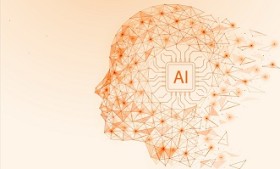AI language model provides new insights into the development of brain diseases
14 march 2024

A new AI language model identifies clinical symptoms in medical summaries and links them to brain tissue from donors of the Netherlands Brain Bank. This yields new insights into the development of individual disease progression and contributes to a better understanding of common misdiagnoses of brain diseases. The model may, in the future, assist in making more accurate diagnoses.
In many brain diseases, the underlying molecular mechanisms are often poorly understood, making it challenging to develop new treatment options. Investigating these molecular mechanisms is additionally challenging because the relationship between actual tissue abnormalities and the patient’s symptoms is often highly complex. Some symptoms, for example, occur in multiple conditions, and the clinical picture can vary significantly from patient to patient, resulting in a substantial percentage of misdiagnoses (up to 30 percent). Insights gained from a newly developed AI language model may potentially change this scenario in the future.
At the Netherlands Brain Bank, brain tissue from over 5000 brain donors with a wide range of different brain diseases is stored. What makes the Netherlands Brain Bank unique is that, in addition to the tissue, they have also documented the medical history and the symptoms reported by the donors. However, this wealth of data was not quantifiable because it was transcribed in a text format, making it difficult to relate these symptoms to the molecular changes in the brain.
Language Model
Inge Huitinga and her team at the Netherlands Institute for Neuroscience joined forces with Inge R. Holtman and her team at the University Medical Center Groningen to unlock this information using a new AI language model. This classification model enables the analysis of the text in medical records and the detection of predefined symptoms. Additionally, they developed a second AI prediction model to make actual diagnoses based on the clinical picture.
Inge Holtman: ‘First, the records had to be thoroughly examined to identify symptoms that regularly occur in donors with different brain diseases. We eventually identified 90 different symptoms in five different domains: psychiatric symptoms (such as depression and psychosis), cognitive symptoms (such as dementia and memory problems), motor issues (such as tremors), and sensory symptoms (such as feeling things that are not there). We then manually labeled 20,000 sentences to train the classification model.’
The final model ultimately determined which symptoms occurred annually for all donors. It was observed that the prediction model was quite effective in making accurate diagnoses but fell short in rare disorders. When analyzing the diagnoses made by the prediction model, a subset of donors emerged who had been incorrectly diagnosed. It turned out that a considerable number of these donors had also been misdiagnosed by the doctor during their lifetime.
Subtypes
Holtman: ‘It seems that there is a group of people suffering from a certain condition, such as Alzheimer’s disease, but exhibiting symptoms more reminiscent of Parkinson’s disease. Or a subtype of Frontotemporal Dementia manifesting as Alzheimer’s disease. It is often challenging to diagnose these groups properly, which makes sense since these individuals show a clinical pattern that does not align with their condition. We strive to continuously improve the prediction model, hoping to make diagnoses of brain diseases more accurate.’
Inge Huitinga: ‘The reality is that many people have a combination of different diseases. Understanding the molecular changes in the brain that contribute to the symptoms of brain diseases is therefore crucial. Molecular biomarkers for diagnosis, prognosis, and ultimately guiding treatment, are the future. Our ultimate goal is to compile a molecular atlas of the brain that relates to symptoms of brain diseases. Such an atlas precisely shows which cells and molecules in the brain change with symptoms such as anxiety, forgetfulness, and depression.’
‘We expect the impact of this molecular atlas to be enormous. It will assist in making diagnoses of brain diseases more accurate and enhance understanding of the cause of symptoms. Once we have mapped the molecular changes, we hope to identify the initial biomarkers that can predict the correct diagnosis during life. This opens doors to the development of new therapies. We are laying the foundation.’
This research is made possible by funding from the Friends Foundation from the Netherlands Institute for Neuroscience and was published in Nature Medicine.
